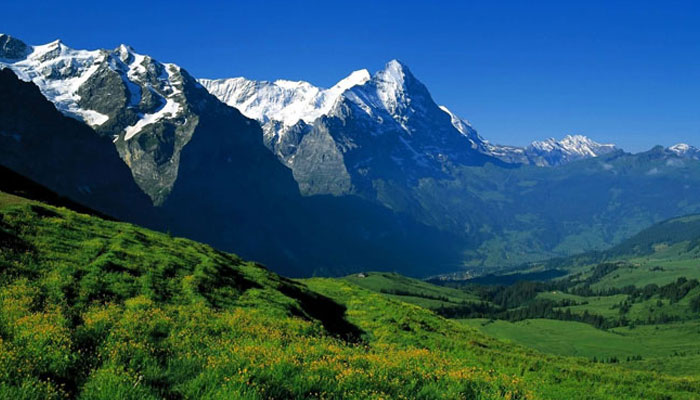Package Itinerary
Paro [Arrival at Paro international Air Port] you will received by Fly to Bhutan and drive to Thimphu for 1hour, the route takes through Paa chu and Wang Chhu is arid and has mainly scrub as vegetation. The countryside from Chuzom to Thimphu is less forested than what you have been seeing so far and the valleys are narrow except for two sections where it widens into gentle slopes and rice fields and lovely strands of conifer trees. After lunch visit the Memorial Chorten, a huge Stupa built in memory of the third King who reined from 1952-1972. Visit Tashichho Dzong – the main secretariat building. It is from here that the country is governed. The Head Abbot and the central monastic body also reside here during the summer. Evening walk around Thimphu city. Visit the Weekend Market (if your stay falls on Saturday or Sunday) Visit the Handicrafts Emporium where Bhutanese textiles and other arts and crafts are displayed and can be purchased. Over night at Thimphu
Day Hike in Thimphu: it is a 5km walk uphill from upper Motithang to Phajoding Goemba ( 3950M) a large monastic complex with 10lhakhangs and 15 monastic residences. from Phajoding, you can see view of Thimphu city. evening return to Thimphu, over night at Thimphu.
Thimphu - Punakha - Wangduephodrang.After an early breakfast, drive to Punakha and Wangdi. On the way halt at Dochula pass (10,000 ft.) for tea coffee and witness a most spectacular view of the Eastern Himalayan mountain ranges.[Afternoon] Visit the Punakha Dzong. This old fortress houses the district administration offices. It is also the winter residence of the State Monastic Body and its Chief Abbot. Punakha was the former capital of Bhutan. The Dzong (fortress) lies between two rivers known as Pochu and Mochu, which means “Male River and Female River.†It was built in 1637 AD. Visit Chimi Lhakhang Monastery. This is a fertility monastery where hundreds of barren women from all over Bhutan and neighboring countries visit. A Saint affectionately known as “The Divine Madman†built the monastery in the 14th century. Overnight at hotel
Wangduephodrang -Trongsa: Today is the long journey, it take 4-5hours. You will cross the Black Mountains via Pele la (3375m) on to Trongsa and Bumthang region that certainly qualifies as cultural capital of the country, stop at Chendebji Chorten, which is built in the eighteenth century by Lama Shida of Tibet to suppress a demon, and continue drive to Trongsa. Over night at Trongsa.
Trongsa [Sightseeing] - Bumthang, Morning: Visit the Trongsa Dzong and the Watch Tower. The Trongsa Dzong was the ancestral home of the ruling dynasty. It is also the district administration office of the Trongsa district. It was built in 1648 A.D.The landscape around Trongsa is spectacular, and for miles on end the Dzong seems to tease you so that you wonder if you will ever reach it. Backing on to the mountain and built on several levels, the Dzong fits narrowly on a spur that sticks out into the gorge of the Mangde River and overlooks the routes south and west. The view from the Dzong extends for many kilometers and in former times nothing could escape the vigilance of its watchmen. Furthermore, the Dzong is built in such a way that in the old days, no matter what direction a traveler came from, he was obliged to pass by the Dzong. This helped to augment its importance as it thus had complete control over all east west traffic. Visit the Ta-Dzong, an ancient Watch Tower of the Trongsa Dzong is located on top of a steep hill about 1 km beyond the Trongsa Dzong. The watchtower displays many interesting armors used by the Bhutanese soldiers during the olden days.Lunch at the hotel and leave for Bumthang (68 km). The journey takes about 3 hrs and is over one of the most scenically beautiful routes in Bhutan.
Bumthang Sightseeing, Morning: Visit the historical Jakar Dzong, built in 1646 A.D. by Minjur Tempa, the third Druk Desi (Temporal Ruler). In 1683 A.D. Gyalse Tenzin Rabgay, the fourth Desi, extended it. Visit several ancient and sacred monasteries such as the Jambay Lhakhang, Kurjey Lhakhang, Kencho Sum. Lhakhang, Tamshing and Pema Samba Lhakhang. Also visit Member Tso “The flaming Lake,†which is considered one of the most important pilgrimage spots. A trip to the Bumthang Swiss farm is also interesting.
Bumthang- Wangdue, after the break fast drive back to wangdue, today is the long journey. Over night at Wangdue.
Wangdue- Paro.After the breakfast drive to Paro for 4hours.evening walk around the Paro town. Over night at Paro.
Paro -Excursion to Taktsang Monastery] after an early breakfast, drive back to Paro for a short trek to Taktsang Monastery (10 km) from Paro Town. The name Taktsang means “Tiger’s Nest’. The monastery is perched on a rocky ledge with a sheer drop of nearly 800 mtrs. It is said that in the second half of the 8th century, Guru Padma Sambbava alighted here upon the back of a tigress. Picnic Lunch at Taktsang cafeteria. The round trip hike takes about 4hrs.Evening: casual stroll through Paro Town for shopping or visit some village homes.
Paro International Air Port. Early morning drive to air port.

